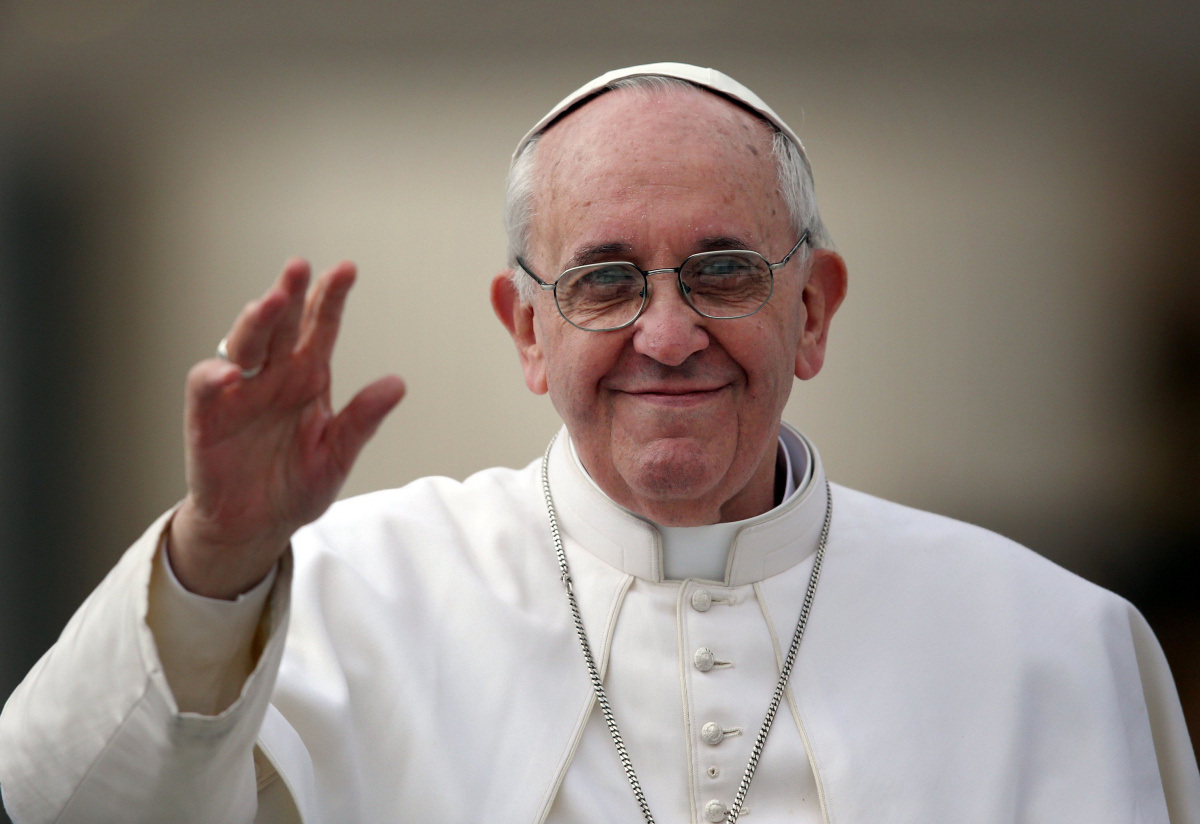We, 551 participants, lay faithful, religious and clergy, coming from 14 Asian countries, 60 Philippine dioceses and 20 lay associations, gathered in Manila from 13 to 16 May 2014 to celebrate with exuberant joy the thirty years since the Charter of the Rights of the Family was promulgated. With us was the Secretary of the Pontifical Council for the Family, Bishop Jean Laffitte, as well as 28 bishops and some men and women of other faith traditions.
The Charter of Rights of the Family
The Charter manifests that nothing authentically human fails to find an echo in the heart of each believer (Gaudium et Spes, n. 1). It expresses what we hold to be the basic framework within which the human family—any human family, every human family—can form, flourish and fulfill its mission.
50 years since Vatican II
In the past 50 years, the world has been undergoing great changes in the economic, social, political, cultural and religious spheres. Affected by these changes is the most basic human institution, the family. In fact, the family itself has been the primary beneficiary and victim of these changes, which have become challenges to families all over the world.
Challenges and Threats
These challenges present themselves as threats to the very existence of the family itself. Abortion kills the very life without which no family can exist. Contraception and sterilization – and a contraceptive mentality which refuses to shoulder the responsibility of having children – threaten the procreative purpose of marriage and the family by attacking the very wellsprings of human life. The advocacy for same-sex marriages likewise attempts to reduce marriage to a sterile relationship between people of the same sex.
An amnesia of God and moral relativism
A consumeristic, materialistic and individualistic culture that suffers from an amnesia of God (Pope Benedict XVI) and is fed by a certain liberal and moral relativism has also threatened the family by breeding lifestyles harmful to family living. And so people live, motivated not so much by the cultivation of healthy human relationships but driven rather by the desire for money, pleasure and success. The outcome is a society where fidelity and commitment come in short supply and are subordinated to the accumulation of possessions and the achievement of personal ambitions; hence, the widespread phenomenon of divorce and marital infidelity.
Poverty breeds moral desolation
Looming large like a storm cloud whose waters can drown the family is the poverty that afflicts billions of people in our continent. This poverty has resulted in conditions which make moral living almost impossible, and has become a fertile field of temptations for impoverished families to surrender their own human dignity in order to meet the economic requirements of survival. Poverty is the fertile ground for pornography, cybercrimes, prostitution, human trafficking, slavery, and other practices that dehumanize and divide members of families. Poverty has also driven people to seek means of livelihood that separate husbands and wives from each other and from their children. Thus, poverty, the deprivation of the necessities for decent human living, has led to the destruction of families.
The ambiguity of affluence
If poverty is gravely harmful to the family, affluence also affects families destructively if it is not tempered by a sense of solidarity with others, especially the poor. Affluence, when enjoyed in a self-centered manner, can only result in the destruction of the lives of individuals and families through hedonism and extravagance.
Threats from other institutions
Compounding the threats to the family are governments and other social institutions that militate against life and the family through coercive measures that run counter to the rights of individuals, couples and families to flourish according to the natural law and the laws of the Church. This natural law we refer to is the participation of human beings in God’s eternal law, a participation inscribed in our very humanity and can be discovered by the light of reason aided by the grace of God. Governments that promote contraception, abortion, sterilization, coercive population control, divorce, same-sex marriages and euthanasia, destroy families which they are duty-bound to protect and foster.
A tsunami of evils
The result of all of these and other threats to family life is a tsunami of evils threatening to engulf families today, whether they be rich or poor.
The family is dear to the heart of God
But the present changes present not only threats but opportunities for families. We believe that the family is especially dear to the heart of God, for the family is the first social institution established by God to foster, defend and promote human life and human love. It is by way of the family, that the good of society, of humanity and of the Church herself passes (CRF, Preamble, K). Because it is so precious to God, it must also be most highly valued by us. Thank God, we in Asia do. Because the family is so valuable and because God wants the future of humanity to pass through the human family, we must safeguard, protect, foster and promote the family. We – each one of us, all of us – must individually and together do this for what is at stake is the future of humanity.
Therefore, we must continue to insist that:
– the family is based on marriage, that intimate union of life in complementarity between a man and a woman which is constituted in the freely contracted and publicly expressed indissoluble bond of matrimony and is open to the transmission of life;
– marriage is the natural institution to which the mission of transmitting life is exclusively entrusted;
– the family, a natural society, exists prior to the State or any other community, and possesses inherent rights which are inalienable (CRF, Preamble, B-D).
Because the family exists prior to the State, we should not allow the State to encroach upon the inherent and inalienable rights of families.
We urge respect for every human life
We urge respect for every human life from conception to natural death and echo the words of St. John Paul II, the saint of the family, who called upon the faithful in Asian countries “where the demographic question is often used as an argument for the need to introduce abortion and artificial population control programs, to resist ‘the culture of death’. They can show their fidelity to God and their commitment to true human promotion by supporting and participating in programs which defend the life of those who are powerless to defend themselves” (Ecclesia in Asia, n. 35).
The family and the destiny of nations
We should also ensure that the family remains “the place where different generations come together and help one another to grow in human wisdom and to harmonize the rights of individuals with other demands of social life” (CRF, Preamble, F). We should realize that our place in human history comes by way of our family.
The need for social equity
We commit ourselves and we urge our Asian societies to work for a more equitable sharing in the goods of this world so as to enable all families to have their rightful share in this world’s goods.
The family and the Church as sacrament
We in the Catholic Church have a special obligation to protect and promote the human family and the Christian family. For the Church is of its nature a sacrament of salvation which both signifies and effects the union of God with human beings and the union of human beings with each other (LG 1). Hence, what makes for the unity of human beings should be protected and fostered by the Church. The family is, of course, most necessary for the union of human beings with each other. But we in the Church should especially protect and foster the Christian family because it is the basic unit of the Church, the domestic Church, the Church in the home. As the Christian family goes, so goes the Church. If the Christian family is strong, the Church will be strong. If the Christian family is weak, the Church will be weak.
The Church protects the family
But it is also true that the Church is the most potent protector of the family. If the Church cannot protect the family, the family will be left without much protection. But if the Church is vigorous in protecting and fostering the family, the family will be protected and flourish.
Governments must protect the family
We urge governments to consider seriously the Charter on the Rights of the Family in the formulation of policies affecting the family. We pledge ourselves to encourage dialogue with our respective governments on matters affecting the family.
The witness of families…
During this assembly, we have heard and seen couples and young people witness how the Christian family has been a powerful transmitter of Gospel values, and of the Good News itself. Where Christ is accepted in faith and imitated in love, there also Christian values are protected and transmitted and the Christian family is strengthened.
…under the sign of the Cross
In this assembly, we wish to express our solidarity with our brothers and sisters in Asia and in other parts of the world who are prevented from expressing their faith in God by oppressive cultural systems and government policies.
With brothers and sisters of other faiths…
We have come to appreciate more through the sharing of our brothers and sisters who are of other faiths that they are also our allies in transmitting to our future generations the values of God and his Kingdom.
We choose life!
Today, we are challenged to choose between life and death for the human family. If we choose life and obey the law of God written in our hearts, we shall live (cf. Dt 30:19f). We in this assembly choose life for the family! We will pray and work for the protection, preservation, and flourishing of every human family.
Encouraged by one another, we are joyful missionaries!
Strengthened by the testimony of those who have given witness in this assembly, encouraged by our togetherness and sharing, and fortified by the Spirit of the Lord, we go forth in joy to make of the family and especially the Christian family Good News for the salvation of the world. We shall be joyful missionaries for the family, proclaiming the Gospel of life and love so as to be “a voice in public life” on behalf of freedom and justice that cannot be silenced by force (cf. Evangelii Gaudium, n. 74).
The Holy Family, the Family of Life
We ask the Holy Family of the Lord Jesus Christ – who is Life (Jn 14:6) – the Blessed Virgin Mary – Mother of Life (cf. Jn 19:26f; cf. Rev 12:1-6) – and St. Joseph – Guardian of Life (Mt 3:13-23) – to intercede for us in our prayer and work for the family to the praise and glory of the Blessed Trinity.
May 16, 2014









..jpg)





























